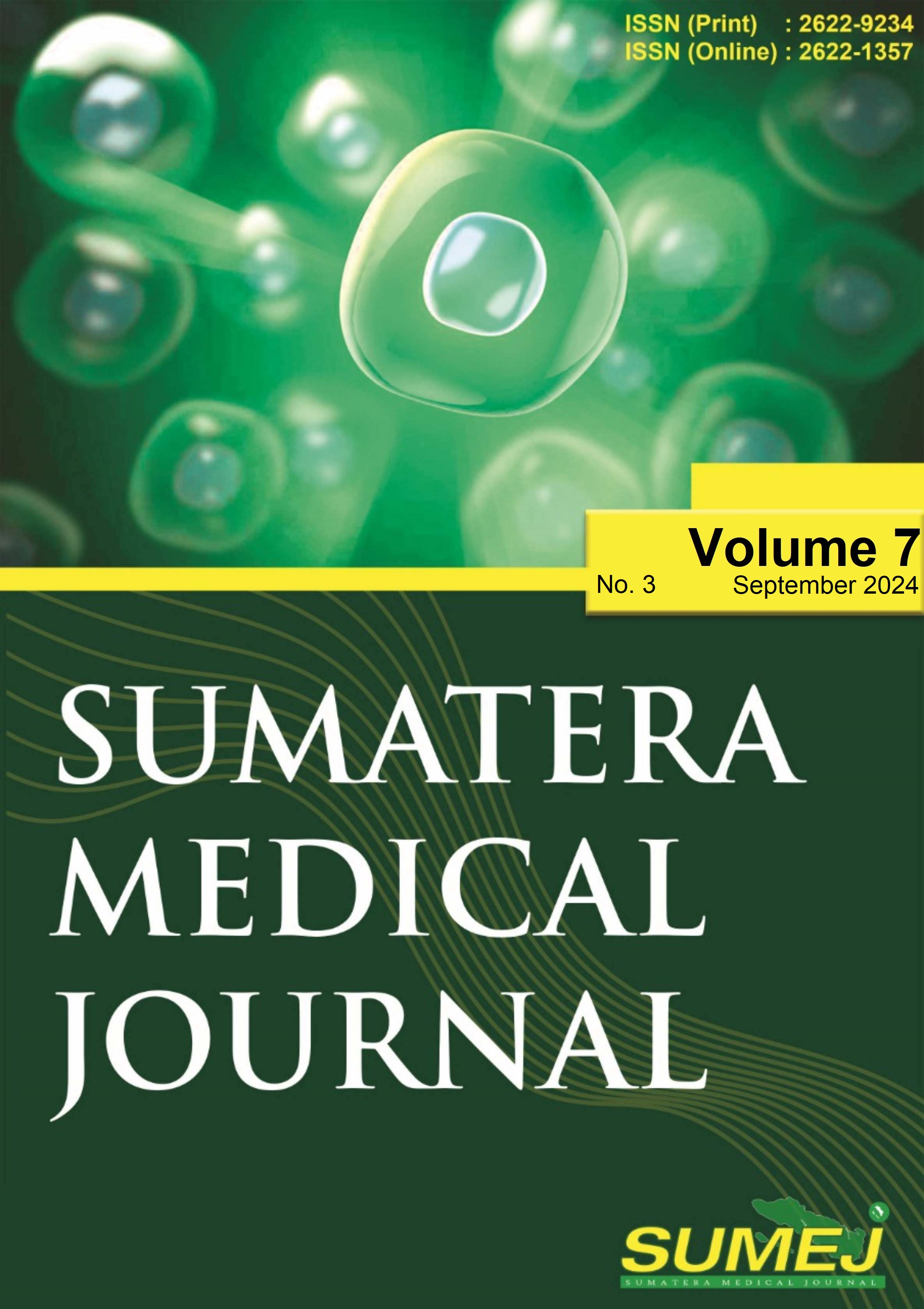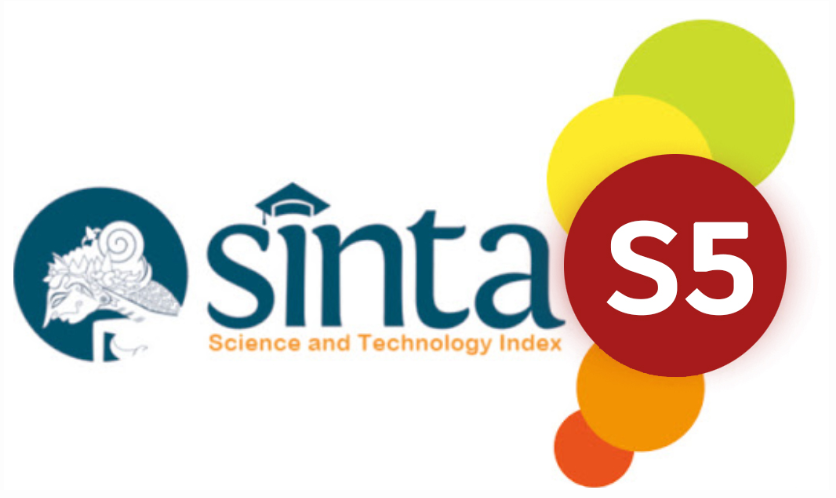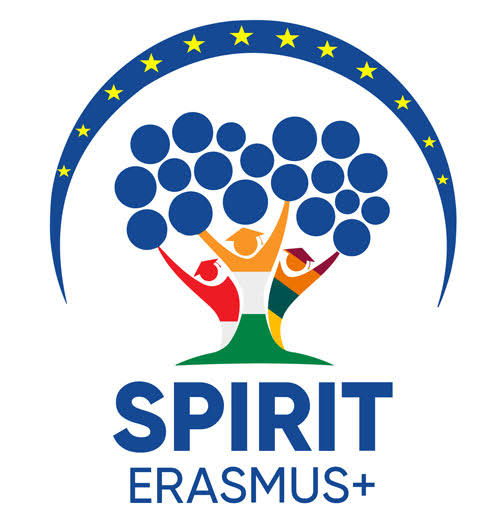Associations Between Knowledge, Attitude and Behavior With Helminthiasis in Children
DOI:
https://doi.org/10.32734/sumej.v7i3.13770Keywords:
attitude, behavior, hygiene, soil-transmitted helminths, worm infectionAbstract
Background: Soil-transmitted helminths (STH) infection is currently one of the highest prevalence neglected tropical diseases in children. Factors contributing to such case are children’s hygiene, as well as the existence of helminths in the surrounding soil. Objective: Therefore, this research is done to determine whether there is significant association between hygiene and STH infection in children. Methods: This observational analysis with a cross-sectional design was conducted on elementary school children by interviewing the children and obtaining fecal samples. Results: Analysis of 197 fecal samples shows that 14.7% of the children were infected with STH and results of the interview show more children had poor knowledge about STH infection (69%). Good hygiene attitude and behavior were found in the majority of the subjects (58.9% and 81.7% respectively). The chi-square analysis performed shows no significant relation between knowledge (p=0.626), attitude (p=0.975), and behavior (p=0.376) and the incidence of STH infection. Conclusion: In this study, although children demonstrated poor knowledge of STH infection but had good hygiene attitudes and behaviors, there was no significant link between these factors and STH infection. This emphasizes the need for ongoing hygiene education in elementary school children.
Downloads
References
WHO. Crossing the billion. Lymphatic filariasis, onchocerciasis, schistosomiasis, soil-transmitted helminthiases, and trachoma: preventive chemotherapy for neglected tropical diseases. World Health Organization; 2017.
WHO. WHO Fact Sheet on Soil-Transmitted Helminth Infections. World Health Organization; 2017 [Online]. Available: http://www.who.int/en/news-room/fact-sheets/detail/soil-transmitted-helminth-infections [Accessed March 18, 2018].
Direktorat Jenderal Pengendalian Penyakit dan Penyehatan Lingkungan. Rencana aksi program pengendalian penyakit dan penyehatan lingkungan tahun 2015-2019. Direktorat Jenderal Pengendalian Penyakit dan Penyehatan Lingkungan; 2015.
Departemen Kesehatan RI. Sistem kesehatan nasional. 2015 [Online]. Available: http://www.depkes.go.id [Accessed July 18, 2024].
Dinas Kesehatan Provinsi Sumatera Utara. Laporan hasil kegiatan program cacingan tahun 2005. Dinas Kesehatan Provinsi Sumatera Utara; 2006.
Anwar RY, Irawati N, Masri M. Hubungan antara higiene perorangan dengan infeksi cacing usus (soil transmitted helminths) pada siswa SDN 25 dan 28 Kelurahan Purus, Kota Padang, Sumatera Barat tahun 2013. Jurnal Kesehatan Andalas. 2014.
Sali L, Abdullah AZ, Suriah S. Faktor risiko infestasi soil transmitted helminths pada anak usia sekolah. Universitas Hasanuddin; 2013.
Damanik DM, Soeyoko, Husodo AH. Sanitation of house and school, personal hygiene and infection of soil transmitted helminths (STH) among elementary school students. Int J Public Health Sci. 2014.
Purba T. Hubungan antara perilaku dengan intensitas infeksi soil transmitted helminths pada siswa-siswi SD Negeri 040470 Desa Lingga Julu Kabupaten Karo tahun 2014. Universitas Sumatera Utara; 2016.
Daud MDB. Hubungan antara higiene dengan infeksi cacing soil transmitted helminths pada siswa-siswi SD Negeri No. 101873 Suka Makmur, Kecamatan Sibolangit, Kabupaten Deli Serdang tahun 2011. Universitas Sumatera Utara.
Agustin M. Permasalahan belajar dan inovasi pembelajaran: panduan untuk guru, konselor, psikolog, orang tua, dan tenaga keguruan. Bandung: Refika Aditama; 2011.
Bosch F, et al. Diagnosis of soil-transmitted helminths using the Kato-Katz technique: what is the influence of stirring, storage time and storage temperature on stool sample egg counts? PLoS Negl Trop Dis. 2021. [https://doi.org/10.1371/journal.pntd.0009032].
Mustafa P, Palandeng H, Lampus BS. Hubungan antara perilaku tentang pencegahan penyakit kecacingan dengan infestasi cacing pada siswa SD di Kelurahan Bengkol Kecamatan Mapanget Kota Manado. Universitas Sam Ratulangi; 2014.
Dachi RA. Hubungan perilaku anak sekolah dasar No. 174593 terhadap infeksi cacing perut di Kecamatan Palipi Kabupaten Samosir tahun 2005. Universitas Sumatera Utara; 2005.
Rahmayanti R, Razali R, Mudatsir M. Hubungan pengetahuan, sikap, dan tindakan dengan infeksi soil-transmitted helminths (STH) pada murid kelas 1, 2, dan 3 SDN Pertiwi Lamgarot Kecamatan Ingin Jaya Kabupaten Aceh Besar. J Biotik. 2014;2(2):77–137.
Kartini S. Kejadian kecacingan pada siswa sekolah dasar negeri Kecamatan Rumbai Pesisir Pekanbaru. Universitas Abdurabb; 2016.
Fitri J, Saam Z, Hamidy MY. Analisis faktor-faktor risiko infeksi kecacingan murid sekolah dasar di Kecamatan Angkola Timur Kabupaten Tapanuli Selatan tahun 2012. J Ilmu Lingkungan. 2012.
Sandy S, Sumarni S, Soeyoko. Analisis model faktor risiko yang mempengaruhi infeksi kecacingan yang ditularkan melalui tanah pada siswa sekolah dasar di Distrik Arso Kabupaten Keerom Papua. Media Litbangkes. 2015;25(1):1–14.
Downloads
Published
How to Cite
Issue
Section
License
Copyright (c) 2024 Sumatera Medical Journal

This work is licensed under a Creative Commons Attribution-ShareAlike 4.0 International License.
The Authors submitting a manuscript do so on the understanding that if accepted for publication, copyright of the article shall be assigned to Sumatera Medical Journal (SUMEJ) and Faculty of Medicine as well as TALENTA Publisher Universitas Sumatera Utara as publisher of the journal.
Copyright encompasses exclusive rights to reproduce and deliver the article in all form and media. The reproduction of any part of this journal, its storage in databases and its transmission by any form or media, will be allowed only with a written permission from Sumatera Medical Journal (SUMEJ).
The Copyright Transfer Form can be downloaded here.
The copyright form should be signed originally and sent to the Editorial Office in the form of original mail or scanned document.











